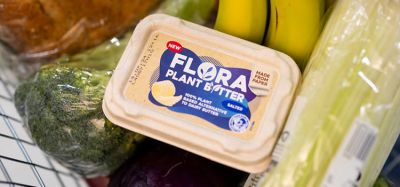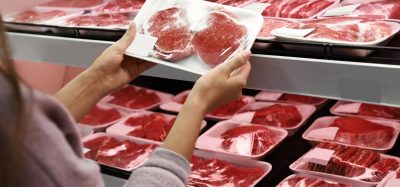Traffic light nutrition labelling – interview with Dr Matt Cole
- Like
- Digg
- Del
- Tumblr
- VKontakte
- Buffer
- Love This
- Odnoklassniki
- Meneame
- Blogger
- Amazon
- Yahoo Mail
- Gmail
- AOL
- Newsvine
- HackerNews
- Evernote
- MySpace
- Mail.ru
- Viadeo
- Line
- Comments
- Yummly
- SMS
- Viber
- Telegram
- Subscribe
- Skype
- Facebook Messenger
- Kakao
- LiveJournal
- Yammer
- Edgar
- Fintel
- Mix
- Instapaper
- Copy Link
Posted: 27 May 2016 | Victoria White, Digital Content Producer | 1 comment
Read our interview with Dr Matt Cole to find out more about his project on front of packaging traffic light nutrition labelling…


The Food Standards Agency (FSA) developed the traffic light nutrition label that gives consumers independent expert scientific dietary advice to help them make healthier choices quickly and easily. But does the traffic light label system work?
A project, led by Dr Matt Cole of the University of Gloucestershire, aims to determine to what extent consumers currently use existing front of packaging traffic light nutrition labelling to make their food choices. It will also investigate if an alternative receipt-based summary may be a more useful tool instead.
New Food caught up with Dr Cole to find out more. Dr Cole provided an overview of the project: “The project aims to understand the public’s awareness of existing front-of-packaging traffic light nutritional information and to what extent it’s currently used to influence food choices. A secondary purpose is to establish whether alternative means of displaying nutritional data (e.g. At the bottom of a shopping receipt) may be a more beneficial tool instead.”
“Not without problems”
Products using the traffic light nutrition system appear with green, amber or red coloured labels on the front of the pack. These show consumers at a glance if food has low, medium or high amounts of fat, saturated fat, sugars and salt. However, the consumer may be left with little knowledge or understanding as to the general healthiness (or not) of their overall purchases, as Dr Cole explained: “Everyone can identify with the key premise of traffic light Iabelling i.e. Red = bad, Green = Good. On the whole I believe that it generally does serve a purpose and in the main helps consumers make appropriate dietary choices. However it is not without problems – people may avoid foods that they perceive to be worse than others due to the labelling system e.g. Diet Coke is all green v.s. Fruit Juice which may be Amber for sugar content, where clearly the health benefits of fruit juice would likely superceed any concerns about additional sugar content. Similarly, meat, cheese and dairy products often have Red or Amber ratings for fat or calories despite significant health benefits to their consumption.
“Additionally information about one food item in isolation does not accurately represent a person’s dietary intake over a period of time – more often than not people consume ‘Meals’ and ‘Diets’ rather than individual foods in isolation and so it’s a little illogical to provide nutritional information on a food-by-food basis. Someone may unnecessarily avoid eating any ‘Red’ foods because they believe it to be detrimental to their health when in fact their overall dietary intake could be very healthy and one or two ‘red’ foods will likely have minimal impact on this.”
For those consumers who are unnecessarily avoiding ‘Red’ foods or for those would like to have an overview of their dietary intake, perhaps a receipt-based nutritional summary of their trolley would be more useful. This is something that the new project will also investigate. Dr Cole explained more about the idea behind receipt-based summaries: “The idea was conceived by Creative Designer Hayden Peek. I simply came across his idea whilst idly browsing Twitter and was struck by how such a simple and inspired concept could help address some of the issues identified above. I contacted Hayden to suggest we collaborate on a research project to see if there was any mileage in his idea and that’s developed into the project that we have now.”
The traffic light nutrition label survey
The team have produced a survey to find out more about what consumers think of traffic light nutrition labelling and the innovative receipt-based summary idea. Dr Cole explained more about the survey: “The survey is relatively simple as we were keen not to try to take on too much and just wanted to dip our toe into the water to gauge public opinion. Thus there are only 5 or 6 key questions where we look to understand how much people are aware of/use existing traffic light info and whether they would be receptive to the idea of a ‘receipt-based’ model instead. The other questions are focuses towards demographic data e.g. Location, socio-economic status, age etc. which will allow us to split the results as there may be differences of opinions across different groups. For example, previous research in this area suggests that low-income families typically make their food choices based upon ‘price’ whereas higher income groups will give ‘healthiness’ or ‘brands’ a greater priority.”
The online survey is open until 10th June 2016 and you can find it here: https://glos.onlinesurveys.ac.uk/traffic-light-nutrition.
The team hope to publish the results of the survey and present the data at a conference in the near future. Dr Cole explained the survey results will also help to inform any future projects and development of the concept.
But what happens if receipt-based summaries prove popular? Will the team approach retailers? Dr Cole said: “We have several ideas of how the concept might develop into the future and yes, one of these might be to approach retailers. However much will depend upon the outcomes of the existing project and so it’s too early to say at this stage.”









Unfortunatelly I can’t answer the survey because I don’t live in the UK.
I will be gratefull if you propose the researchers to open it to other countries.